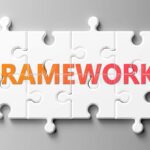Organizations that fail to innovate and evolve risk being left behind, while those that successfully navigate change can reap enormous rewards. But, implementing meaningful change can be a daunting task, especially when faced with entrenched processes, resistant employees, and competing priorities. That’s where the CHANGE framework comes in – a powerful, structured approach to transformation that helps organizations overcome the obstacles to change and unlock their full potential. By following the CHANGE framework, leaders can drive meaningful transformation, foster a culture of innovation, and ultimately, achieve sustainable success. In this post, we’ll delve into the principles and strategies behind the CHANGE framework, and explore how it can be used to revolutionize your organization and propel it towards success.
Introduction to the CHANGE Framework
In today’s fast-paced and ever-evolving business landscape, organizational success is no longer solely dependent on having a solid strategy or a talented team. It’s about adaptability, resilience, and the ability to navigate complex transformations. This is where the CHANGE Framework comes in – a revolutionary approach that empowers organizations to not only survive but thrive in the face of change. CHANGE is an acronym that stands for Cultivate, Harmonize, Activate, Navigate, Generate, and Energize. Each letter represents a critical component of the transformation process, carefully designed to help organizations overcome obstacles, build momentum, and achieve lasting success. By embracing the CHANGE Framework, organizations can break free from the status quo, unlock their full potential, and emerge as leaders in their industry.
What is the CHANGE Framework and how does it work?
The CHANGE Framework is a powerful, research-backed methodology that provides a structured approach to driving transformational change within an organization. At its core, CHANGE is an acronym that represents five multidimensional (mirror effect) and essential components of successful transformation: Culture, Hunger, Alignment, Nurture, Governance, and Engagement. By addressing each of these interconnected elements, organizations can create a comprehensive roadmap for transformation that is tailored to their unique needs and goals.
The CHANGE Framework is designed to be flexible and adaptable, allowing organizations to navigate the complexities of transformation with confidence and clarity. It begins by assessing the organization’s current Culture, identifying the underlying values, beliefs, and behaviors that shape its identity. From there, it sparks a sense of Hunger, fueling a desire for change and growth that drives the transformation effort forward.
Next, the framework focuses on Alignment, ensuring that everyone within the organization is working towards a common goal, with clear roles and responsibilities. This is followed by Nurture, where leaders invest in the growth and development of their teams, providing the support and resources needed to succeed. Governance provides the necessary structure and oversight, ensuring that the transformation effort is managed effectively and efficiently. Finally, Engagement brings it all together, fostering a sense of ownership and accountability among team members, and driving the transformation forward.
By applying the CHANGE Framework, organizations can break free from the status quo and unlock their full potential, driving meaningful and sustainable transformation that yields lasting results.
The C in CHANGE: Clarify Your Vision
Clarifying your vision is the foundation upon which all subsequent transformation efforts are built. It’s the North Star that guides your organization’s journey, ensuring everyone is moving in the same direction. Without a clear vision, you’re like a ship without a rudder, drifting aimlessly in the sea of uncertainty. A well-defined vision inspires and motivates your team, giving them a sense of purpose and direction. It helps to focus your organization’s energy and resources on what’s truly important, rather than wasting them on non-essential tasks. A clear vision also enables you to make informed decisions, allocate resources effectively, and measure progress towards your goals.
When your vision is unclear, you risk confusing your employees, customers, and stakeholders, leading to frustration, mistrust, and ultimately, stagnation. By clarifying your vision, you’ll be able to articulate a compelling narrative that resonates with your team, ignites passion, and drives meaningful change. In this sense, the C in CHANGE is not just a letter, but a critical step in transforming your organization for success.
The H in CHANGE: Harmonize Your Team
Harmonizing your team is a crucial step in the CHANGE framework, as it sets the stage for a unified and cohesive organization. When individual team members are working towards different goals, or worse, working at cross-purposes, it can lead to chaos, confusion, and a lack of progress. Harmonization, on the other hand, brings people together, fostering a sense of collaboration and shared purpose.
Imagine a symphony orchestra, where each musician plays a unique role, yet together, they create a beautiful, harmonious whole. This is what happens when your team is harmonized – each individual’s strengths and skills are leveraged to achieve a common objective. When team members are aligned, they can focus on their specific tasks, knowing that their colleagues are working towards the same goal.
In a harmonized team, communication flows freely, and ideas are shared openly. Silos are broken down, and departments work together seamlessly. This, in turn, leads to increased productivity, better decision-making, and a more positive work environment. By harmonizing your team, you’ll be amazed at how quickly you can overcome obstacles, adapt to change, and drive success.
The A in CHANGE: Align Your Strategy
Now that you’ve Clarified your vision, it’s time to Align your strategy to achieve it. This is where the rubber meets the road, and your organization’s goals and objectives are translated into actionable plans. Alignment is about ensuring that every department, team, and individual is working towards the same objectives, with a clear understanding of how their daily tasks contribute to the bigger picture.
Think of it as a well-oiled machine, where every cog and gear is working in harmony to drive the organization forward. When everyone is aligned, you’ll see a significant reduction in siloed thinking, duplicated efforts, and misaligned resources. Instead, you’ll experience a surge in productivity, collaboration, and innovation, as teams work together to overcome obstacles and achieve common goals.
To achieve alignment, you’ll need to establish clear key performance indicators (KPIs), set measurable targets, and define the roles and responsibilities of each team member. This will help to create a sense of accountability and ownership, as everyone understands their part in driving the organization’s success. By aligning your strategy, you’ll be able to focus your resources on the most critical areas, make data-driven decisions, and drive meaningful change that transforms your organization from the inside out.
The N in CHANGE: Nurture a Culture of Innovation
Nurturing a culture of innovation is the spark that sets the entire CHANGE framework ablaze. It’s the lifeblood that courses through the veins of your organization, fueling creativity, experimentation, and progress. When you nurture a culture of innovation, you’re not just encouraging new ideas, you’re creating an environment where people feel empowered to take risks, challenge the status quo, and push boundaries. This is where the magic happens, where teams come together to co-create solutions, and where your organization becomes a hotbed of innovation.
Imagine a workplace where curiosity is celebrated, where failures are viewed as opportunities for growth, and where collaboration is the norm.
This is the kind of culture that fosters a sense of ownership, where employees are invested in the organization’s success, and where they’re motivated to contribute to its growth. When you nurture a culture of innovation, you’re not just driving business results, you’re creating a workplace where people thrive, where they feel valued, and where they’re inspired to make a difference.
In this kind of culture, ideas flow freely, and experimentation is encouraged. It’s a culture that’s agile, adaptable, and responsive to changing market conditions. It’s a culture that’s ripe for disruption, and where innovation becomes the norm. By nurturing a culture of innovation, you’re setting the stage for a transformation that will revolutionize your organization, and propel it towards success.
The G in CHANGE: Generate Momentum
Generating momentum is the spark that sets the transformation process in motion. It’s the catalyst that propels your organization forward, creating a sense of urgency and excitement around the changes you’re implementing. This is where the rubber meets the road, and your vision for transformation starts to take shape. To generate momentum, you need to create a sense of ownership and accountability among your team members. This means empowering them to take action, providing the necessary resources and support, and celebrating their successes along the way.
Imagine a snowball rolling down a hill, gathering speed and size as it goes. That’s what generating momentum is all about – creating a self-sustaining force that drives progress and motivates your team to strive for excellence. It’s about building on small wins, recognizing milestones, and using these achievements to fuel further growth and innovation. By generating momentum, you’ll create a culture of continuous improvement, where every team member is inspired to contribute to the organization’s transformation and success.
The E in CHANGE: Embrace Continuous Improvement
Embracing continuous improvement is the engine that drives the CHANGE framework forward. It’s the spark that ignites a culture of innovation and progress within your organization. When you encourage a mindset of continuous improvement, you empower your team members to think creatively, challenge the status quo, and strive for excellence in every aspect of their work.
In this dynamic environment, complacency is not an option. Instead, your team is constantly seeking ways to optimize processes, refine strategies, and enhance customer experiences. By fostering a culture of continuous improvement, you’ll witness a significant shift in your organization’s DNA. Collaboration and knowledge-sharing will flourish, and your team will be motivated to experiment, learn from failures, and build upon successes.
This relentless pursuit of improvement will have a profound impact on your organization’s overall performance. You’ll see increased efficiency, improved productivity, and enhanced customer satisfaction. Moreover, as your team becomes more agile and adaptable, they’ll be better equipped to respond to changing market conditions, customer needs, and emerging trends. By embracing continuous improvement, you’ll create a culture of excellence that propels your organization toward sustained success and growth.
Case Study: How the CHANGE Framework Transformed a Struggling Company
The power of the CHANGE framework is more than just a theoretical concept – it’s a proven approach that has delivered remarkable results in real-world organizations. To illustrate its transformative potential, let’s take a closer look at a remarkable case study.
Meet XYZ Inc., a mid-sized manufacturing company that had been struggling to stay afloat in a rapidly changing market. Despite its rich history and dedicated workforce, the company was facing declining sales, inefficient processes, and a lack of innovation. The leadership team was at a loss, unsure of how to turn the tide and restore the company to its former glory.
That’s when they discovered the CHANGE framework. By applying its principles, the company embarked on a journey of transformation that would change its fortunes forever. The framework’s structured approach helped the leadership team identify and prioritize key areas for improvement, from streamlining operations to fostering a culture of innovation and experimentation.
Through a series of workshops, training sessions, and strategic planning exercises, the entire organization was aligned behind a shared vision for change. Employees were empowered to take ownership of improvement initiatives, and cross-functional teams were established to tackle specific challenges. The results were nothing short of remarkable: within 12 months, XYZ Inc. had achieved a 25% increase in sales, a 30% reduction in operational costs, and a significant boost in employee engagement and morale.
The CHANGE framework had not only helped the company survive but thrive in a rapidly changing market. By embracing the principles of change, the leadership team had created a culture of continuous improvement, positioning XYZ Inc. for long-term success and sustainability. This case study serves as a powerful testament to the transformative power of the CHANGE framework, and the incredible results that can be achieved when organizations are willing to adapt, innovate, and evolve.
Overcoming Resistance to Change: Tips and Strategies
The age-old obstacle: resistance to change. It’s a phenomenon that has plagued organizations for centuries, and it’s a major reason why many transformation efforts fail to get off the ground. The fact is, change can be uncomfortable, even painful, for some individuals. It’s human nature to resist the unknown, and when faced with the prospect of altering their routines, habits, and ways of working, many people will dig in their heels and resist.
But it’s not all doom and gloom. With the right strategies and tactics, you can overcome resistance to change and create an environment that’s receptive to transformation. It starts with communication – clear, transparent, and consistent communication that explains the why behind the change. It’s essential to address the fears and concerns of your team members, and to provide them with the support and resources they need to adapt to the new reality.
Another crucial factor is to involve your team members in the change process from the outset. Give them a sense of ownership and control over the changes that are taking place, and empower them to take an active role in shaping the future of the organization. This will not only help to build trust and buy-in, but it will also tap into the collective wisdom and creativity of your team, leading to more innovative and effective solutions.
Ultimately, overcoming resistance to change requires a deep understanding of human psychology, a willingness to listen and empathize, and a commitment to creating an environment that’s open, transparent, and supportive. By following these tips and strategies, you can overcome the obstacles that stand in the way of transformation, and create an organization that’s agile, adaptable, and poised for success.
How to Implement the CHANGE Framework in Your Organization
Implementing the CHANGE framework in your organization requires a thoughtful and structured approach. It’s not a matter of simply flipping a switch or issuing a company-wide memo; rather, it’s a deliberate and intentional process that involves careful planning, communication, and execution. To begin, identify a cross-functional team of leaders and stakeholders who will serve as champions of the CHANGE framework. This team should be tasked with developing a clear understanding of the framework’s principles and how they can be applied to your organization’s unique challenges and opportunities.
Next, conduct a thorough assessment of your organization’s current culture, processes, and systems to identify areas where the CHANGE framework can have the greatest impact. This may involve gathering data, conducting surveys, and holding focus groups to gain a deep understanding of your organization’s strengths and weaknesses.
Once you have a clear understanding of your organization’s needs, develop a customized implementation plan that outlines specific goals, objectives, and timelines for each component of the CHANGE framework. This plan should be communicated widely throughout the organization, and regular progress updates should be shared to ensure everyone is aligned and working towards the same goals.
Throughout the implementation process, it’s essential to provide ongoing training and support to employees at all levels of the organization. This may involve workshops, coaching, and mentoring, as well as the development of new policies and procedures that support the principles of the CHANGE framework.
Finally, establish a system of metrics and benchmarks to measure the effectiveness of the CHANGE framework and identify areas for ongoing improvement. By following these steps, you can ensure a successful implementation of the CHANGE framework and position your organization for long-term success.
Conclusion: Revolutionizing Your Organization with the CHANGE Framework
As we bring this journey to a close, it’s essential to reflect on the transformative power of the CHANGE framework. By embracing the principles of Courage, Humanity, Adaptability, Necessity, Growth, and Evolution, you can revolutionize your organization from the inside out. The CHANGE framework is not just a set of guiding principles, but a catalyst for meaningful change that can propel your organization towards success.
By adopting a courageous mindset, fostering a culture of humanity, and embracing adaptability, you’ll be better equipped to navigate the complexities of today’s fast-paced business landscape. By recognizing the necessity of evolution and prioritizing growth, you’ll be able to stay ahead of the curve and drive innovation. And, by embracing the inevitability of evolution, you’ll be able to future-proof your organization for long-term success.
In a world where change is the only constant, the CHANGE framework offers a beacon of hope for organizations seeking to transform and thrive. By incorporating these principles into your daily operations, you’ll be able to unlock the full potential of your team, drive business growth, and create a lasting impact on the world around you.
As you embark on the journey of transforming your organization for success, remember that change is not a destination, but a continuous process. The CHANGE framework is a powerful tool that can help you navigate the complexities of organizational transformation, and by applying its principles, you can unlock the full potential of your team and drive meaningful growth. Don’t be afraid to challenge the status quo, empower your people, and drive innovation – the future of your organization depends on it. With the CHANGE framework as your guide, you’ll be well on your way to creating a culture of continuous improvement, where success is not just a goal, but a sustainable reality.












About The Author
InnoValeur
Conseil, intégration, et support sur SAP